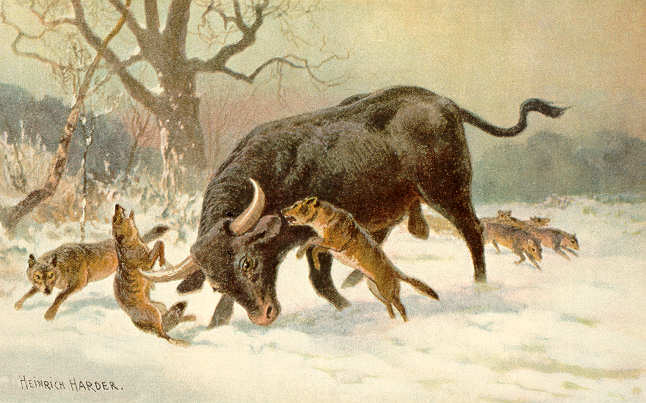When we talk about extinction, we tend to think of it in the past tense, or as something that just kind of happens, far removed from the activities of humankind. So let’s put things in perspective, just so we fully understand the scope of extinction.
If there are 100,000,000 distinct animal species on planet earth, and 0.01% of all species go extinct each year, then more than 10,000 species go extinct every year. And given how little we know about earth’s more mysterious ecosystems, many of these may be species we’re not even aware of yet.
So the question is not whether extinction happens on a regular basis, but to what extent human activities play a role in these occurrences. The good news—or perhaps the bad news—is that we have numbers on that topic, too. Or, at least, a general idea of where things are headed.
According to Endangered Species International, 44,838 species occupied the IUCN Red List, which tracks the progress and status of threatened and endangered species, in 2006. Of those, 784 had gone extinct by 2006. The year is now 2015, and the number has increased to 905; an alarming upward trend. Just as we can track the ever-worsening progress of climate change after human beings arrived on the scene, so too can we measure our impact on the natural world by keeping tabs on the number of species that go missing from year to year.
Why Aren’t We Doing More?
You’re probably asking yourself why we’re not able to do more, if scientists and environmental watchdogs are so keenly aware of this ongoing crisis.
Part of the problem with addressing extinction in a practical way is, of course, the intersection of capitalism and politics: an immovable force and an unstoppable object. All too often, we witness the result of humankind’s avarice, whether we’re hunting species to the brink of extinction because they have something we need, or because we simply turn a willfully blind eye to the kind of environmental damage that our engines of production keep churning out on a practically constant basis.
Consider, for example, the case of the greater sage-grouse—a threatened species that had lived for some time on the bubble of being labeled “endangered.” Just last month, the US Fish and Wildlife Service decided not to grant endangered status to the Greater sage-grouse, a move that angered environmentalists across the country.
As is usually the case with decisions such as these, worries of economic troubles dragged the issue into political gridlock.
Thankfully, a sort of compromises was reached, and there may yet be hope for the greater sage-grouse. Despite not granting this particular species the protections afforded by endangered status, the Natural Resources Conservation Service doubled down on its Sage Grouse Initiative, which creates a sort of treaty-by-necessity between the Federal government and private land owners, and has been uniting private and public interests since 2010. With awareness of the problem on both sides, there may yet be hope that the greater sage-grouse will rally, and replenish its numbers in the coming years.
Is There Hope for Extinct Species?
Here’s a question that sounds like something out of science-fiction: With so many species going extinct on an annual basis, can anything be done to “resurrect” the species we’ve already lost?
Impossibly, the answer might be yes.
I’d like to turn your attention to an amazing and eye-opening TED Talk given by Stewart Brand, who in 2013 shared with the world the progress that’s been made to resurrect several extinct species. It’s been a well-kept secret among the scientific community for many years, but enough progress has been made, and they’re confident enough in their methodology, that they’re ready to share their findings with the world.
Using cutting-edge genetic techniques, and using closely related species as “host” parents, teams from across the world have been collaborating to bring back the passenger pigeon, which used to be plentiful in North America, but were hunted to extinction by the early 20th century. According to Brand’s TED Talk, they’re about to turn the corner and potentially pave the way for a brand new population of this long-lost bird.
What’s next after that? The possibilities are truly breathtaking. How about the aurochs? Or even the wooly mammoth?
We really are living in a golden age of scientific progress, where we may finally have the tools at our disposal to correct some of our worst mistakes. So the only question left is, Why wouldn’t we want to?



